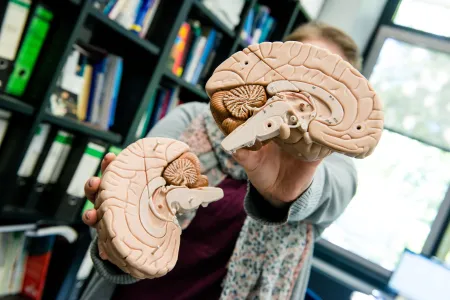
Psychology
Getting romantic at home wearing an EEG cap
Kissing, cuddling, chatting – thanks to modern research equipment, researchers have been able to record the brain activity of couples in emotional situations at home.
Research into the neuronal basis of emotion processing has so far mostly taken place in the laboratory, i.e. in unrealistic conditions. Bochum-based biopsychologists have now studied couples in more natural conditions. Using electroencephalography (EEG), they recorded the brain activity of romantic couples at home while they cuddled, kissed or talked about happy memories together. The results confirmed the theory that positive emotions are mainly processed in the left half of the brain.
A group led by Dr. Julian Packheiser, Gesa Berretz, Celine Bahr, Lynn Schockenhoff and Professor Sebastian Ocklenburg from the Department of Biopsychology at Ruhr-Universität Bochum describes the results in the journal Scientific Reports, published online on 13 January 2021.
In previous studies on the neuronal correlates of emotion processing, feelings were usually triggered in subjects by presenting certain images or videos in the laboratory. “It was unclear whether that really reflects how people experience and act out feelings,” says Julian Packheiser. “Ultimately, emotions comprise not only the perception of feelings but also their expression.”
Mobile EEG equipment enables measurements at home
This is why, in the current study, the researchers measured the brain waves of 16 couples in positive emotional situations in their own homes. A measurement of this kind would not be possible using conventional EEG systems as the movements created during kissing, cuddling or gesticulation produce artifacts in the data. “We have used a mobile EEG system that records not only brain waves but also the movement patterns of the subjects,” explains Julian Packheiser. This allowed the team to control the artifacts in the data.
Positive situations, above all emotional situations involving kissing and talking, were associated with greater activity in the frontal areas of the left half of the brain. The study thus confirmed the results from laboratory investigations and what is known as the valence model of emotional lateralisation, which states that positive emotions tend to be processed in the left half of the brain and negative emotions in the right.
During the study, the researchers evaluated the EEG data in a certain frequency range, the alpha frequency band between 8 and 13 Hz and the beta frequency band between 13 and 30 Hz.
